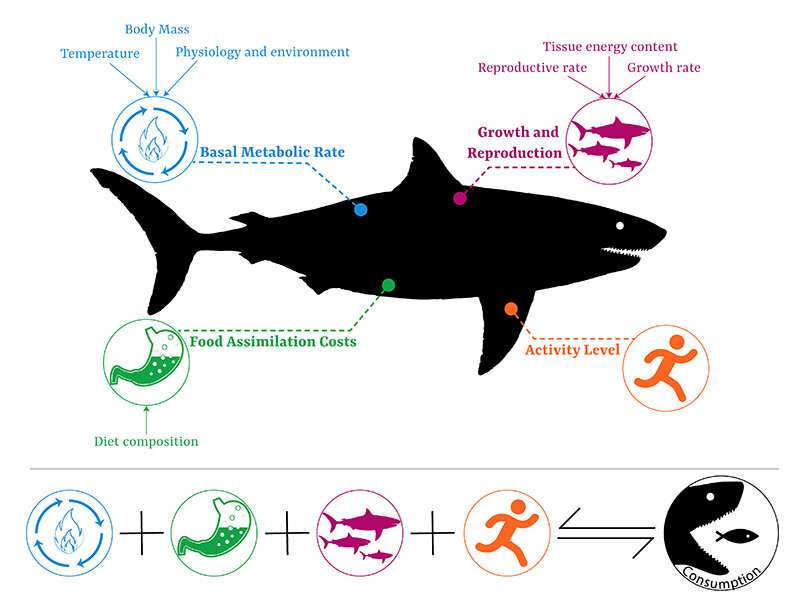Mastering metabolism for shark and ray survival

Understanding the internal energy flow—including the metabolism—of large ocean creatures like sharks and rays could be key to their survival in a changing climate, according to a new study.
University of Queensland Ph.D. candidate Christopher Lawson led a team of researchers investigating the bioenergetics of sharks and rays; data which may reveal how they will fare in a drastically changing ocean.
"Shark and rays play crucial roles as top predators in many marine ecosystems, but are currently among the most threatened vertebrates," Mr Lawson said.
"Based on historical extinctions, it looks like they're highly susceptible to future environmental changes, so a changing climate could severely affect their populations.
"These animals are ectotherms—or cold-blooded—so their body temperature is reliant on the temperature of their environment.
"Warming oceans mean their metabolic rate increases with temperature, and they'll have to consume more food otherwise their growth or reproductive rate could suffer."
To make matters worse for these ocean giants, Mr Lawson and his colleagues believe the species will face compounding climate pressures.
"Climate change is also changing the available habitat for these animals, with some parts of the ocean becoming too warm or having reduced oxygen levels," he said.
"And many prey species are shifting their distribution—meaning that while large sharks and rays may need to consume more food, there might be less of it available.
"Ultimately this can limit reproduction levels and we may see a decline in many of these already-threatened species."
The study's data was compiled from various research projects from the last five years, identifying the most effective and promising bioenergetics analysis methods.
"Measuring the energy use of large sharks and rays is really quite difficult," Mr Lawson said.
"It's even more so than other extremely large animals like whales or elephants, which can be more easily accessed, so there's a lack of data in this area.
"Now we're looking at utilising technological advances in data loggers and tags—that can be physically attached to the animals—collaborating with large public aquariums, using sophisticated computer modelling and even machine-learning.
"We really need more research in this space, which may prove critical in saving our big ocean hunters."
More information: Christopher L. Lawson et al. Powering Ocean Giants: The Energetics of Shark and Ray Megafauna, Trends in Ecology & Evolution (2019). DOI: 10.1016/j.tree.2019.07.001
Provided by University of Queensland



















